The receptor tyrosine kinase EPHB6 regulates catecholamine exocytosis in adrenal gland chromaffin cells
- PMID: 32321761
- PMCID: PMC7261780
- DOI: 10.1074/jbc.RA120.013251
The receptor tyrosine kinase EPHB6 regulates catecholamine exocytosis in adrenal gland chromaffin cells
Abstract
The erythropoietin-producing human hepatocellular receptor EPH receptor B6 (EPHB6) is a receptor tyrosine kinase that has been shown previously to control catecholamine synthesis in the adrenal gland chromaffin cells (AGCCs) in a testosterone-dependent fashion. EPHB6 also has a role in regulating blood pressure, but several facets of this regulation remain unclear. Using amperometry recordings, we now found that catecholamine secretion by AGCCs is compromised in the absence of EPHB6. AGCCs from male knockout (KO) mice displayed reduced cortical F-actin disassembly, accompanied by decreased catecholamine secretion through exocytosis. This phenotype was not observed in AGCCs from female KO mice, suggesting that testosterone, but not estrogen, contributes to this phenotype. Of note, reverse signaling from EPHB6 to ephrin B1 (EFNB1) and a 7-amino acid-long segment in the EFNB1 intracellular tail were essential for the regulation of catecholamine secretion. Further downstream, the Ras homolog family member A (RHOA) and FYN proto-oncogene Src family tyrosine kinase (FYN)-proto-oncogene c-ABL-microtubule-associated monooxygenase calponin and LIM domain containing 1 (MICAL-1) pathways mediated the signaling from EFNB1 to the defective F-actin disassembly. We discuss the implications of EPHB6's effect on catecholamine exocytosis and secretion for blood pressure regulation.
Keywords: EPHB6; F-actin; actin; adrenal; adrenal gland chromaffin cell; catecholamine; exocytosis; receptor tyrosine kinase.
© 2020 Shi et al.
Conflict of interest statement
Conflict of interest—The authors declare that they have no conflicts of interest with the contents of this article.
Figures
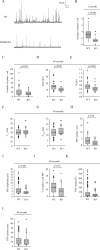
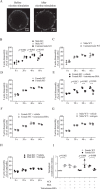
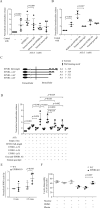
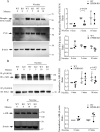
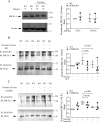


Similar articles
-
EPHB6 controls catecholamine biosynthesis by up-regulating tyrosine hydroxylase transcription in adrenal gland chromaffin cells.J Biol Chem. 2019 Apr 26;294(17):6871-6887. doi: 10.1074/jbc.RA118.005767. Epub 2019 Mar 1. J Biol Chem. 2019. PMID: 30824540 Free PMC article.
-
EPHB6 and testosterone in concert regulate epinephrine release by adrenal gland chromaffin cells.Sci Rep. 2018 Jan 16;8(1):842. doi: 10.1038/s41598-018-19215-2. Sci Rep. 2018. PMID: 29339804 Free PMC article.
-
Receptor tyrosine kinase Ephb6 regulates vascular smooth muscle contractility and modulates blood pressure in concert with sex hormones.J Biol Chem. 2012 Feb 24;287(9):6819-29. doi: 10.1074/jbc.M111.293365. Epub 2012 Jan 5. J Biol Chem. 2012. PMID: 22223652 Free PMC article.
-
The EphB6 Receptor: Kinase-Dead but Very Much Alive.Int J Mol Sci. 2021 Jul 30;22(15):8211. doi: 10.3390/ijms22158211. Int J Mol Sci. 2021. PMID: 34360976 Free PMC article. Review.
-
Regulation of exocytosis in adrenal chromaffin cells: focus on ARF and Rho GTPases.Cell Signal. 2003 Oct;15(10):893-9. doi: 10.1016/s0898-6568(03)00052-4. Cell Signal. 2003. PMID: 12873702 Review.
Cited by
-
MICAL-mediated oxidation of actin and its effects on cytoskeletal and cellular dynamics.Front Cell Dev Biol. 2023 Feb 17;11:1124202. doi: 10.3389/fcell.2023.1124202. eCollection 2023. Front Cell Dev Biol. 2023. PMID: 36875759 Free PMC article. Review.
-
Co-clustering of EphB6 and ephrinB1 in trans restrains cancer cell invasion.Commun Biol. 2024 Apr 16;7(1):461. doi: 10.1038/s42003-024-06118-4. Commun Biol. 2024. PMID: 38627519 Free PMC article.
References
Publication types
MeSH terms
Substances
Grants and funding
LinkOut - more resources
Full Text Sources
Molecular Biology Databases
Research Materials
Miscellaneous

